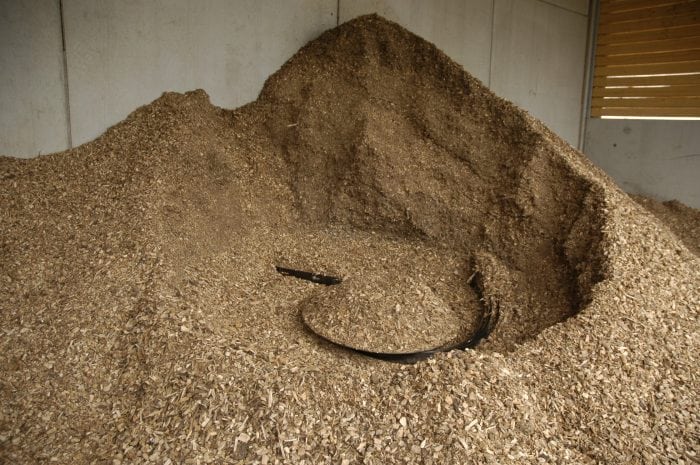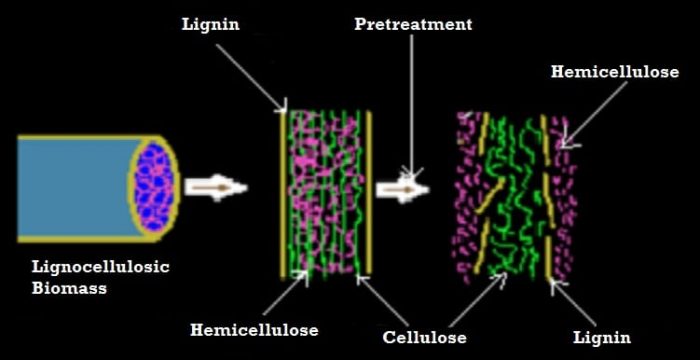
Today the protection of the environment from pollution is of instant concern, which can only be attained by finding an alternative to the use of chemicals for biofuel production. In recent decades, use of lignocellulosic waste as a feedstock for biofuel production has attracted researchers. It can be easily transformed into a usable form by applying an appropriate pretreatment.
Various pretreatment methods, including physical, chemical, physicochemical, biological, and combined pretreatments, have been used by many investigators. Chemical pretreatment is found to be more exclusive due to the use of a large number of chemicals for pretreating the lignocellulosic substrates. Combined pretreatments are effective as compared to single pretreatment and there is a wide scope of combinations which can also be realistic in the future [1]. Recently, a review “Pretreatment of lignocellulosic wastes for biofuel production: a critical review,” has been published in an international journal of Elsevier, Renewable and Sustainable Energy Reviews.
This review critically discusses and compares different pretreatment methods along with various biomass resources, the chemical composition of diverse agricultural biomass, and the utilization of this biomass for bioenergy generation. A large number of pretreatment processes used for bio-hydrogen, bio-ethanol, bio-methane, bio-methanol, bio-butanol, and bio-diesel production are discussed in this review article.

Image credit: Radhika Singh
Dynamic increase in human population is accompanied by the generation of huge amounts of altered types of wastes and a crucial need to solve the issue of waste disposal has occurred. Sponsoring of energy for waste disposal is not cost-effective but consumption of waste for energy production is complimentary. There is a large interest in the use of plant origin fuels or biodegradable wastes for energy development. It also supports the economy and society in an ecological manner. Biomass resources are the only renewable and sustainable primary energy resources that can provide various substitute transportation fuels in the short term.
We are surviving in the age of technology and exploration of technology also leads to the improvement of various means and methods used for pretreatment and making of biofuels from lignocellulosic biomass. Pretreatment technologies have industrialized instantaneously with the elaboration of methods used for biofuel production [3]. A number of amendments were also useful in engines of automobiles to utilize biofuels like bio-ethanol and biodiesel as they could blend with petrol and improves its efficiency.
Use of several types of lignocellulosic wastes has encouraged the researchers to use this inexpensive source for biofuel generation. Lignocellulosic waste is attaining popularity as a basis of fermentable sugars for liquid fuel production. Enzymatic treatment after chemical pretreatment of lignocellulosic biomass is more exclusive and that is why broad research has been carried out frequently to overcome this problem finally [4]. To discover the best pretreatment method, it is also obligatory to utilize the waste for the production of biofuel without using excessive chemicals.
These findings are described in the article entitled Pretreatment of lignocellulosic wastes for biofuel production: A critical review, recently published in the journal Renewable and Sustainable Energy Reviews. This work was conducted by Dolly Kumari and Radhika Singh from the Dayalbagh Educational Institute in Agra, India.
References:
- Mood SH, Golfeshan AH, Tabatabaei M, Jouzani GS, Najafi GH, Gholami M, Ardjmand M. Lignocellulosic biomass to bioethanol, a comprehensive review with a focus on pretreatment. Renewable and Sustainable Energy Reviews, 2013;27:77–93.
- Chandra R, Takeuchi H, Hasegawa T. Hydrothermal pretreatment of rice straw biomass: A potential and promising method for enhanced methane production. Applied Energy, 2012;94:129-40.
- Raslavicius L, Striugas N, Felneris M. New insights into algae factories of the future. Renew Sustain Energy Rev 2018;81(1):643–54. https://linkinghub.elsevier.com/retrieve/pii/S1364032118302041. rser.2017.08.024Getrights and content.
- Chiaramonti D, Prussi M, Ferrero S, Oriani L, Ottonello P, Torre P et al. Review of pretreatment processes for lignocellulosic ethanol production, and development of an innovative method. Biomass and Bioenergy, 2012;46:25-35.








